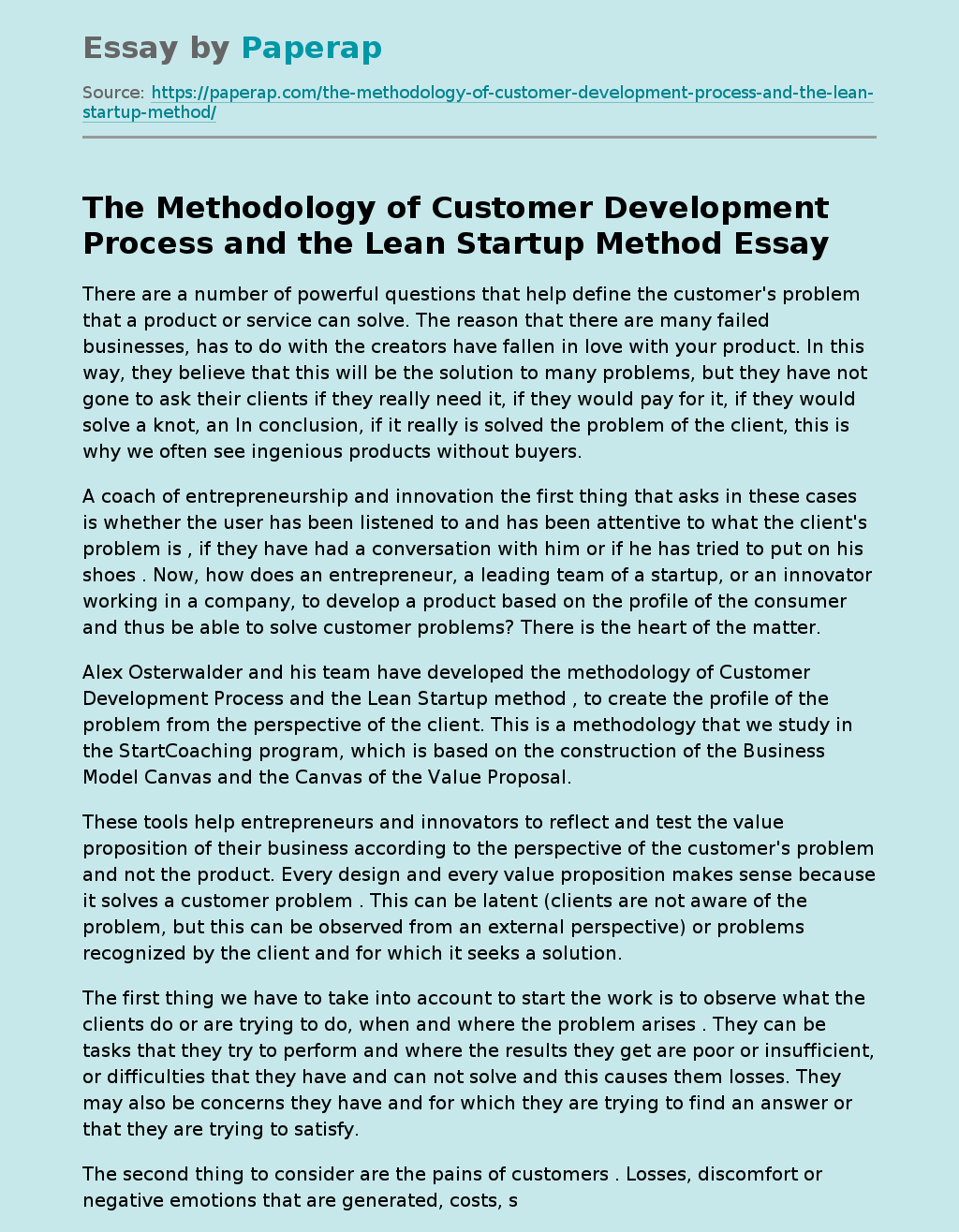The Methodology of Customer Development Process and the Lean Startup Method
There are a number of powerful questions that help define the customer’s problem that a product or service can solve. The reason that there are many failed businesses, has to do with the creators have fallen in love with your product. In this way, they believe that this will be the solution to many problems, but they have not gone to ask their clients if they really need it, if they would pay for it, if they would solve a knot, an In conclusion, if it really is solved the problem of the client, this is why we often see ingenious products without buyers.
A coach of entrepreneurship and innovation the first thing that asks in these cases is whether the user has been listened to and has been attentive to what the client’s problem is , if they have had a conversation with him or if he has tried to put on his shoes . Now, how does an entrepreneur, a leading team of a startup, or an innovator working in a company, to develop a product based on the profile of the consumer and thus be able to solve customer problems? There is the heart of the matter.
Alex Osterwalder and his team have developed the methodology of Customer Development Process and the Lean Startup method , to create the profile of the problem from the perspective of the client. This is a methodology that we study in the StartCoaching program, which is based on the construction of the Business Model Canvas and the Canvas of the Value Proposal.
These tools help entrepreneurs and innovators to reflect and test the value proposition of their business according to the perspective of the customer’s problem and not the product. Every design and every value proposition makes sense because it solves a customer problem . This can be latent (clients are not aware of the problem, but this can be observed from an external perspective) or problems recognized by the client and for which it seeks a solution.
The first thing we have to take into account to start the work is to observe what the clients do or are trying to do, when and where the problem arises . They can be tasks that they try to perform and where the results they get are poor or insufficient, or difficulties that they have and can not solve and this causes them losses. They may also be concerns they have and for which they are trying to find an answer or that they are trying to satisfy.
The second thing to consider are the pains of customers . Losses, discomfort or negative emotions that are generated, costs, situations and unwanted risks that the client experiences before, during and after completing the task described in point one. In this case, we ask ourselves, for example, does this task or activity take a long time, cost a lot of money or does it require considerable effort to do it? What frustrations, discomforts or headaches for not doing well? What about the current solutions? Are there other better performance solutions? What is missing from the current solution in terms of results, performance, malfunction?
The third field is referred to the clients’ profits if they manage to solve the problem. In this field we will describe the benefits that the client expects or could receive, the ones they want and the ones that will surprise them . These can be economic, functional, profits of social type, positive emotions and / or savings.
To observe the benefits or gains of the client, the questions that can help the design team find powerful answers are: what savings can the client obtain with a good solution? What makes you happy? What results and expectations does your client have of a good proposal? How do you excite current solutions to your client? What could make your client’s job or life easier? This is an important insight to abandon the tendency and the temptation to start designing the solution without first having a vision of the problem from the perspective of the client. That phrase that the client is always right, in entrepreneurship, manages to have more strength.
The Methodology of Customer Development Process and the Lean Startup Method. (2021, Feb 10). Retrieved from https://paperap.com/the-methodology-of-customer-development-process-and-the-lean-startup-method/

